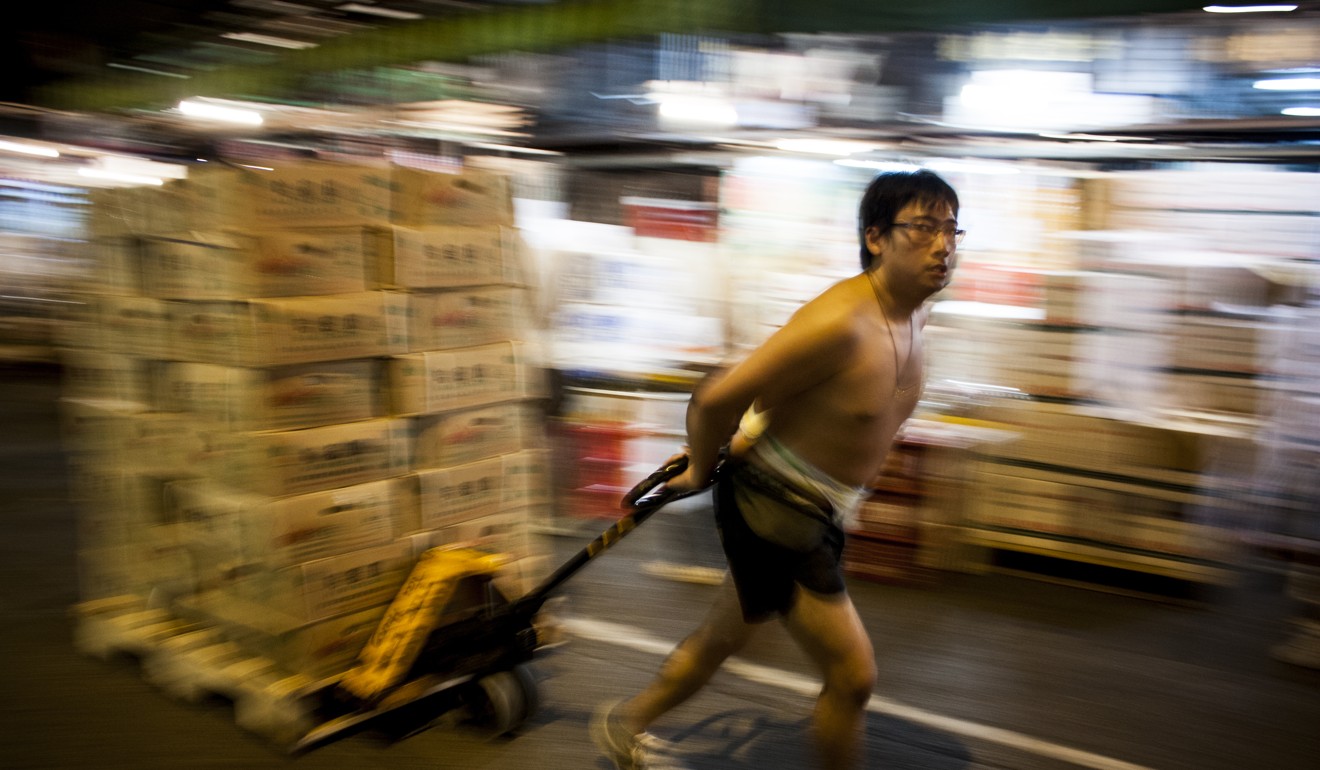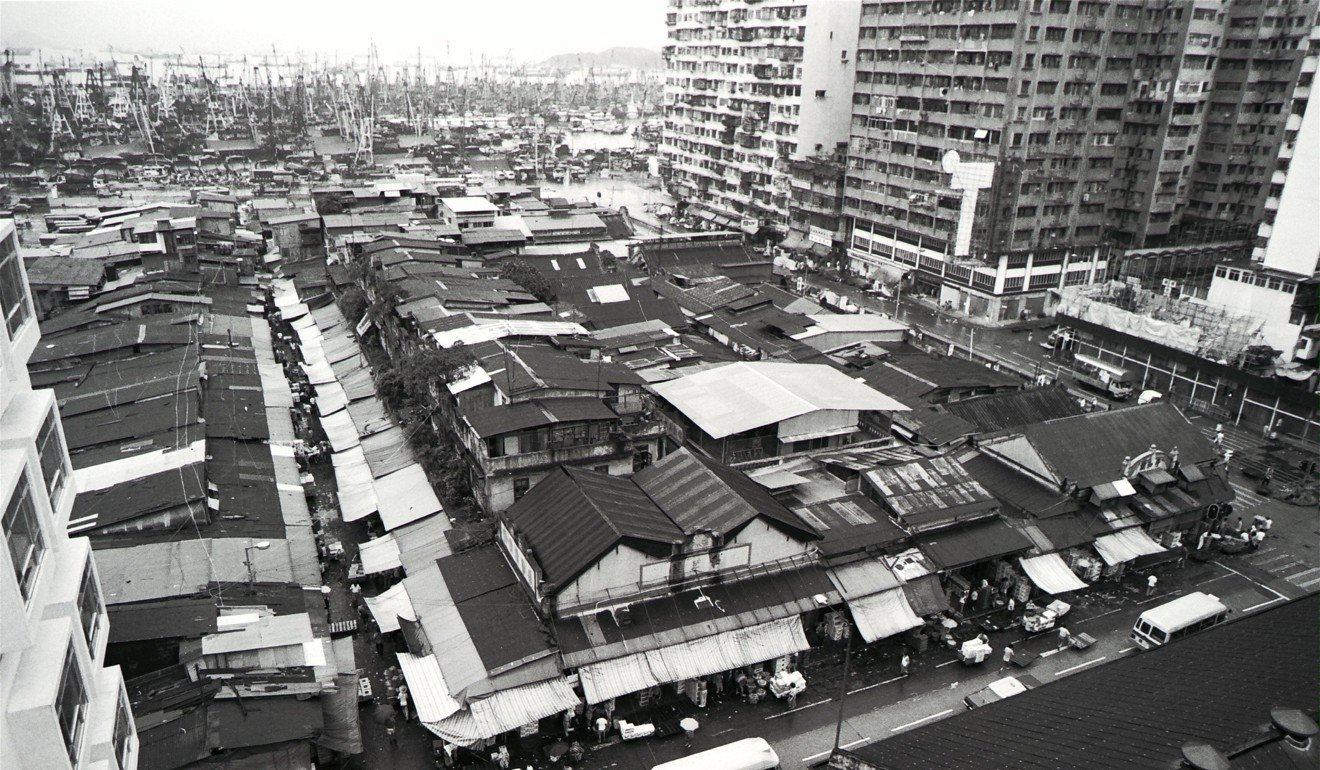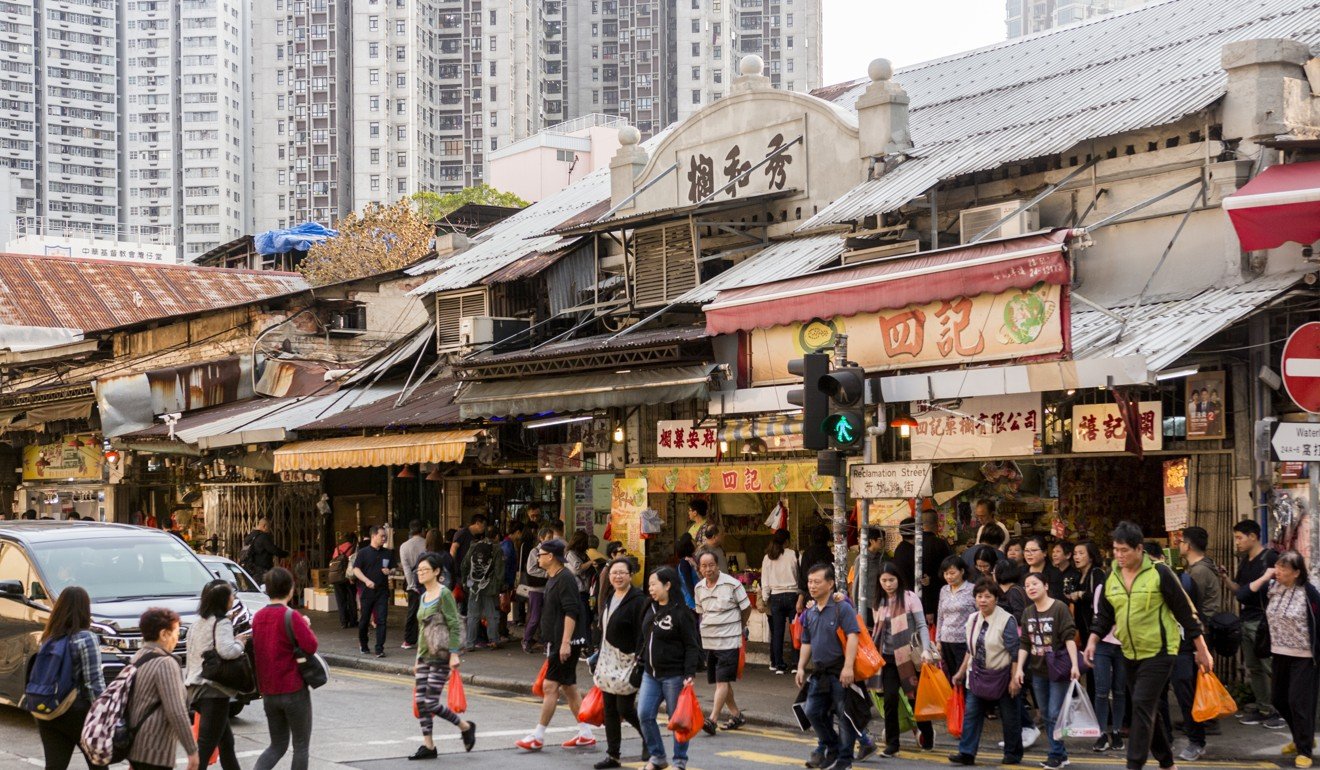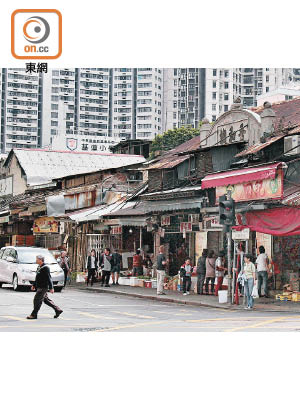果欄簡介及要聞
九龍水果批發市場 (Kowloon Wholesale Fruit Market) 又名油麻地果欄 (Yau Ma Tei Wholesale Fruit Market / Yau Ma Tei Fruit Lann), 是香港二級歷史建築,極具歷史價值及保育價值。
順豐果欄希望籍此網頁欄目,紀錄在果欄發生的大小二事,為這個全港最大、中外遠近馳名的水果批發市場作見證。
同時籍此向本地港人以及各國遊客推廣此香港景點,為本港旅遊業出一分力。
油麻地果欄提供全香港水果的主要集散地,而水果的來源來自國外和內地。在這裡,超過 250 間生果批發商,每天凌晨是果欄最活躍的時間,工人、商家紛紛忙着競投生果、進行交易,以及轉運貨品。隨着交易時間的不同,交投價格亦會有所不同。交易時段剛開始時,競投價格最高,時間越後,價格亦會越低,而可以選擇的水果種類,亦會相應減少。
您可以在果欄,感受到香港人為生活而拚博的獅子山精神。
• • • • • • • • • • • •
油麻地果欄(英語:Yau Ma Tei Wholesale Fruit Market / Yau Ma Tei Fruit Lann),原名為九龍水果批發市場(Kowloon Wholesale Fruit Market),亦常簡稱作「果欄」,是香港主要水果批發市場,位於九龍油麻地,北臨窩打老道,南抵石龍街,西為渡船街,東為新填地街。
果欄的雛形建於1913年,前身是九龍一處傳統墟市,「果欄」是珠三角一帶對水果批發市場的俗稱,經營的商鋪初期只以草棚搭成。
直到1920年代至1930年代,香港政府才開始批地讓欄商興建固定樓房,多幢一、二層高的磚石建築逐漸組成今貌,至今尚可見到不少具戰前特色的裝潢。最初渡船街、窩打老道一帶賣雞、鴨等家禽,東莞街賣菜,而後面是九龍魚市場,果欄的面積比現在小得多,只佔新填地街一帶,而果欄並非只賣生果,主要是賣蔬菜,只有如「福和果菜欄」、「秀和欄」和「大益欄」等幾個大型的果菜欄。
直到1965年6月1日長沙灣蔬菜批發市場啟用及1974年11月1日長沙灣臨時家禽批發市場啟用雞欄和菜欄搬遷後,才全部變成果欄。戰後建成的石龍街一帶果欄,由於當時檔主共同聘用同一間建築公司,所以於1952年建成的16個果欄外觀十分相似,地面前端是上落貨物區,欄內存放較遲交收的生果,而樓上多數是用作焗蕉的蕉房或雪房,近年才加裝升降機方便存放生果。
1990年,果欄被古物諮詢委員會列為香港三級歷史建築,於2009年12月18日改列為香港二級歷史建築。
• • • • • • • • • • • •
2019-01-31
【迎豬年】列為二級歷史建築 林鄭去年拍板活化果欄
果欄的晚上,才是最旺場的時候。(黃學潤攝)
被列為二級歷史建築的油麻地果欄,至今有106年歷史,共200多個批發商,養活4.8萬名從業員。特首林鄭月娥去年初宣佈保育及活化果欄,並點名民政事務局長劉江華跟進,有意打造成旅遊景點。
油麻地果欄原名為九龍水果批發巿場,於1913年落成,前身是傳統墟市,賣雞、鴨、蔬菜和水果等,經營商舖初期以草棚搭成,直到1920年至1930年代,政府開始批地讓欄商興建一、二層高的磚石樓房經營。1965年及1974年,長沙灣蔬菜批發巿場和長沙灣臨時家禽批發巿場分別啟用,雞欄和菜欄相繼搬走後,只留下幾個大型果菜欄,其後再有水果欄商進駐,慢慢演變成現在的果欄。
由於果欄主要在晚間運作,多年來引起衞生及清潔、噪音、交通阻塞等問題,政府早在1969年已決議重置果欄,曾先後考慮長沙灣、葵涌和青衣,但最終未落實,審計署也曾三次在審計報告促政府遷置果欄。
直至去年初,特首林鄭月娥宣佈保育及活化果欄計劃,更點名由劉江華跟進,經油尖旺區議會關注油麻地果欄工作小組委託樹仁大學進行研究,顯示逾八成居民和業界支持原址保留果欄,並倡建新大樓或設天幕以助發展,及把遠離民居但鄰近果欄的渡船街天橋底空地和巧翔街部份空地,長期用作物流中轉和凍倉是最好的活化保育方案。據悉,政府將考慮有關研究,市建局亦將逐一會見商販商討活化事宜。
不過,據知果欄內有部份欄商是非法霸地經營,並無繳付地租。去年政府落實活化計劃後,地政總署展開凍結登記,列明在發出通告日之後,才在此區經營的營運者,將不獲納入活化計劃。諷刺的是,3年前受災的欄商亦一併獲准登記,惟至今卻復業無期。
一直協助災民的自由黨批發及零售界議員邵家輝表示,雖然政府以霸佔官地為由,不欲重新開放災區供災民復業,但他指不少商販已經營多年,歷史悠久,希望政府騰出少量土地,供他們復業。
民政事務總署回覆稱,果欄火災後,相關部門圍封火場以清理現場及處理含有石棉等有害物質。其後,民政事務局及油尖旺民政事務處多次與受影響商戶及關注果欄的區議員和立法會議員會面,解釋政府政策並尋求欄商支持和配合政府的活化計劃。民政事務總署已委託市區重建局進行活化的可行性研究,有關工作正在推行中。
• • • • • • • • • • • •
2018-09-16
保育活化果欄 或開主題餐廳
【本報訊】特首林鄭月娥年初提出研究保育及活化有過百年歷史的油麻地果欄,打造成方便零售及吸引遊客的地點。市建局行政總監韋志成指,果欄亦屬油旺研究範圍,油尖旺區議會正進行研究及諮詢,他初步認為果欄除保育外,部份位置可進行改動及活化,如建成水果為主題的餐廳或設零售設施等;至於女人街及廟街等,重建時或無可避免受影響,會盡量保留地區特色。
逾百年歷史的果欄有望成為遊客熱點。
保留街道特色
韋志成受訪時指,曾聽到不少地區意見希望區內的特色街道可保留,故「會試吓搵(街道的)歷史建築或文化特色,盡量保留特色,但唔會唔郁」。他舉例稱旺角女人街兩旁有不少舊樓,拆卸重建時會無可避免受影響,「女人街咁長係咪由頭到尾都保育?如要保,邊一段值得保?要做諮詢先知」。
特首林鄭月娥年初宣佈保育油麻地果欄,韋志成指區議會已成立工作小組,與大學合作進行詳細諮詢,探討保育及搬遷安排,「例如決定邊部份留低,邊部份可起少少嘢活化,但唔會將果欄變發展項目」。會否活化成室內水果市場等?韋志成指:「可能起啲建築物,例如同生果有關嘅餐廳?有零售安排?但都要先了解成個運作,令佢保持到今日嘅經濟活動,亦可做到其他嘢。」
油尖旺區區議員余德寶指,區議會半年前起進行相關研究,曾初步諮詢區議員、附近商戶和大廈法團等意見,發現約三分之二意見支持活化及保育果欄,三分之一支持搬遷,區議會將繼續進行公眾諮詢。據他了解,因果欄長期製造阻街、噪音等問題,故附近居民一直希望果欄搬遷,但若考慮到可透過不同措施,如加設隔音設施等進行活化,認為保育果欄亦可接受;而果欄內的商戶則不傾向搬遷,對活化持正面態度。余認為果欄有不少具歷史價值的建築,如牌坊等,希望能保留,但不少設施需改善。
■記者鍾雅宜
• • • • • • • • • • • •
2018-05-21
From mangoes to murders, Hong Kong wholesale fruit market in Yau Ma Tei has been a different place for over 100 years
Yau Ma Tei is one of Hong Kong's oldest and most diverse neighbourhoods. In the second instalment of our miniseries exploring facets of its history, we recall the colourful past of Gwo Laan, the city’s wholesale fruit market.
There’s Yau Ma Tei – and then there’s the Gwo Laan. The wholesale fruit market that has operated at the corner of Waterloo Road and Reclamation Street since 1913 is at once an integral part of its neighbourhood and a world unto itself.
For more than a century, it has supplied Hong Kong with fresh fruit from near and far, but it has also embodied a certain roughneck side to the city’s personality.
Every night, as the sun slips behind the barge cranes in the Yau Ma Tei Typhoon Shelter, shirtless, heavily tattooed men get to work pushing and pulling boxes of pineapples, durians and oranges between warehouses and trucks. By the time the rest of the neighbourhood has gone to sleep, the Gwo Laan is just getting started, working itself into a frenzy of activity that peaks in the early hours of the morning.
With its tight cluster of tin-roofed shacks and well-worn stone buildings, the Gwo Laan doesn’t look like it has changed much since the early days of its operation. Back then, the waters of Victoria Harbour lapped directly against the market, and fruit was as likely to come in by boat as it was by truck.
In the early 20th century, the market was known as the Government Vegetables Market, and it handled all kinds of produce. (The nickname Gwo Laan came later; gwo means fruit and laan refers to a wholesale market.) Fishmongers joined the crowd in the 1930s.
Although some fruit and vegetables were imported from China, at that time most came from the city’s New Territories, which produced enough food to supply its urban areas.
A 1936 article in the South China Morning Post took a bit of poetic licence to explain how things worked.
“Attached to the laan are men called Kai-ye, literally godfather or sponsor,” it reported. “The Kai-ye goes out to the New Territory and says to the producer, ‘Let me sell for you, I'll lend you money without interest to assist your production. I'll provide baskets and I'll send men out to weigh your produce and bring it into the laan. After the stuff has been sold through the laan from market stalls to the public, I'll bring back to you the price realised by sale to the public. For all this you will pay me commission for my work and you will pay the laan commission for the laan facilities.’”
The architecture of the market reflected the prestige of the godfathers. As history enthusiast Hugh Farmer notes on his website Industrial History of Hong Kong, the market's original buildings are built with Dutch colonial-style gables and pediments, with each merchant's name carved into the pediment.
At the time, Yau Ma Tei was still a small community, and the Gwo Laan helped it become the early commercial hub of Kowloon.
The fish and vegetable operations left in 1965, when the government built new facilities in Cheung Sha Wan, West Kowloon. But the fruit business stayed on. Along the way, it developed a somewhat dodgy reputation.
In 1977, a group of five bandits walked into the market wearing surgical masks and ambushed an armoured car that was collecting money from the fruit vendors. After exchanging fire with a security guard, they grabbed the money and escaped in a waiting vehicle.
Just a few weeks later, a second group of thieves walked into the market and seized the weekend's earnings, which were sitting in a pair of canvas bags. All told, the robberies cost the market HK$1.09 million – a huge sum of money at the time.
Perhaps it was an inside job. The market was a haven for drug dealers, and the same year as the robberies, the newly created Independent Commission Against Corruption uncovered a heroin syndicate that had been operating in the fruit market with the help of officers from the Yau Ma Tei Police Station. 86 policemen were arrested.
When the case finally made its way to court, the operators of a shooting gallery (politely dubbed a “heroin divan” by the Post) near the market revealed they had been paying HK$10,000 a day in bribes to corrupt officials.
The next few decades saw a cat-and-mouse game between police and triads, with periodic raids launched on criminal groups that had taken root in the market, such as in 1986, when police smashed a 14K triad racket that was shaking down truck drivers.
There are still occasional triad-related murders and assaults in the market, the most recent of which occurred in 2016, when the heir to one of the market's oldest businesses was slashed in the neck by masked men.
The market remains a vital part of Hong Kong – and not just because it supplies the city’s fruit. In 2016, a fire tore through 10 of the market’s stalls, raising questions about the future of this historic site. But a transformation has already taken place.
Although the nighttime wholesale trade is still going strong, since 2012 the market has added retail operations, and on weekend afternoons it is packed with customers buying pricey Malaysian durian and perfectly ripe Korean strawberries.
On a warm evening, fruit vendor Lam Yuek-kei is standing in front of a colourful stall piled high with dragon fruit and mangoes.

“It used to be you had to buy a whole box of fruit,” she says. “If you bought apples, you'd have to eat apples for the whole week! Now you can buy just one or two pieces of fruit. A lot of families come here, a lot of foreigners, because there's a lot of variety. It makes me happy.”
Lam is sanguine about the market’s future. There have been calls for it to be relocated since the 1970s, but the merchants have always resisted. “It's become a fixture of Hong Kong. Why would you tear it down?” she asks. “People come here to experience Hong Kong culture. They come here because, in their heart, there's Gwo Laan.”
Additional reporting by Daryl Chan
• • • • • • • • • • • •
2018-05-17
香港百年果欄擬活化打造旅遊景點
【文匯網訊】大公文匯全媒體報道:香港油麻地果欄,原名九龍水果批發市場,位於九龍油麻地,迄今已有105年歷史。油麻地果欄現有二百多戶批發商,處理全港近8成的批發水果。目前,港府正研究對其進行保育及活化,將油麻地果欄打造成推動香港旅遊、零售業等綜合區,吸引更多遊客造訪。
「果欄」是珠三角一帶對水果批發市場的俗稱。油麻地果欄的雛形建於1913年,經營的商舖初期以草棚搭成。1920年代至1930年代,商人開始興建固定樓房,至今尚可見到不少具戰前特色的裝潢。1990年,果欄被古物諮詢委員會列為香港三級歷史建築,於2009年改列為香港二級歷史建築。
油麻地果欄現時有二百多戶批發商,處理全港近8成的批發水果
油麻地果欄批發水果都是在深夜和凌晨進行,店舖通常在午後落閘休息
「福和果菜欄」屋頂尚保留有陳舊的徽號
午後的商家點算生意收入
香港油麻地果欄內手推車「停車場」
香港油麻地百年果欄,秀和欄是早期的水果攤檔商之一
工人搬運貨物後經過面向渡船街外圍的壁畫
午後的香港油麻地果欄很是安靜,小貓在貨架上休息
午後的商家正在休息看報紙
(大公文匯全媒體新聞中心供稿 圖片來源:中新社)
• • • • • • • • • • • •
2018-01-19
活化果欄 打造水果基地
外國有不少富有特色的批發零售市場,如築地魚市場、東大門批發區、悉尼蔬果批發市場等,不僅是當地人購物常到之處,亦是吸引無數遊客慕名前往的觀光熱點。香港雖只是彈丸之地,但難得亦有一個同樣蘊藏巨大發展潛力的特色批發市場——油麻地果欄,所以政府除了要繼續讓其原址經營,還要因勢利導,好好發揮出它的優勢。
油麻地果欄最早源於1910年代的一個傳統墟市,其後經過增建擴展而成了現今模樣,總計足足有逾百年歷史。果欄內除了保留着極具文化和歷史價值的建築物,盛載着多代港人的集體回憶,亦為本地民生以至經濟擔當一定角色。據講香港每年從世界各地輸入多達十六億公斤的水果,扣除轉口的十億公斤,供港人食用的便有六億公斤,其中至少有一半就是經油麻地果欄供應。
正因為油麻地果欄具有經濟、文化和歷史價值,又交通便利,相信只要加以活化,定能發展成為亞洲水果貿易中心,並為香港增添一大旅遊景點,一如政府計劃利用深水在成衣布料零售批發的背景,在該區建立「設計及時裝基地」。事實上,在既有的地區經濟基礎上注入新元素,可起到水到渠成之效。就此我歡迎特首林太早前在立法會回應,指政府正着手進行果欄保育和活化工作,希望將其打造成一個有利本地經濟、方便零售及吸引遊客的景點。
當然,事分緩急,活化發展是長遠工作,不能一蹴而就,而眼前亟待政府處理的,是協助部分商戶解決燃眉之急。
前年9月,果欄近石龍街的店舖發生了一場三級大火,有多達四十一間商舖被燒燬,其後當局更將上址圍封清拆,導致有關商戶無法繼續營業。手停口停,災戶和相關員工的生計大受打擊,在火災發生至今的一年多裏,一直無法復業,可謂苦不堪言。災戶目前最需要的,無疑是當局盡快落實安排附近一處地點,供他們作臨時營業謀生之用。
正如「家有一老,如有一寶」,在香港有上百年的特色景點,已經少之又少,我希望政府能善用油麻地果欄的既有優勢,使之成為香港的一個新地標。
邵家輝(逢周五見報)
自由黨副主席
立法會議員
東區區議員
• • • • • • • • • • • •
2017-04-25
名家筆陣:果欄活化可創多贏
香港零售業發展蓬勃,是經濟支柱一環,本地素有購物天堂和美食天堂的美譽,儘管商品種類齊全兼貨真價實,惟也被批評周圍只是一味的大商場和無限的購物店舖而已!為何日本可有馳名世界的築地,曼谷有翟道翟(Chatuchak),首爾有南大門,香港就沒有這類特色市場呢?
其實香港也有些特色市場和購物區,如玉器市場和古董一條街,惜前者發展空間有限,荷李活道則是商戶行業所凝聚,商品不大眾化。香港要發展特色市場,我認為油麻地果欄最為具備條件。
萬事俱備 只欠東風
首先,油麻地果欄歷史悠久,已存在並持續經營逾100年,在海內外和本地也有一定知名度;二是果欄內有部分建築物具歷史價值和建築特色,例如石龍街16家舖位本身已有保育價值;三是果欄位於市區,周邊交通網絡發達。
油麻地果欄具備條件,發展成為特色市場。
四是果欄本身有業界自發組織的行業商會,易於統籌管理;五是水果本身是非常受歡迎的大眾化商品,易吸引消費者;六是毗鄰有龐大的內地市場,是行業强大後盾。因此,發展果欄可說是天時、地利、人和兼備,只欠東風!
打造水果貿易中心
在果欄的朋友稱,之前曾就活化果欄發展為特色批發市場提過建議,並向政府提交「發展香港成為亞洲水果貿易中心」建議,惟有關部門未回應,致無法推行。
另由於部分店舖是向政府租用土地,政府某些部門就一直提出搬遷果欄,以解決果欄對區內交通、居民的滋擾,致果欄內大部分商戶擔心政府隨時收回,不敢投資維修建築物,更遑論美化,結果令果欄硬件予人一副日久失修的感覺。
政府不回應,相信是由於搬遷油麻地果欄一直在政府議程上,加上每當有個別行業向政府要求支援時,往往被「基於公平競爭原則,不會用公帑支援個別行業發展」為由而推卻!經濟鏈牽一髮動全身,若能成功活化發展水果批發市場,更可藉此促進水果轉口貿易和相關展覽的發展,可說是一盤相當具潛力的生意。
本地水果市場全面開放,港人可吃到來自全球的水果,無論是非洲(南非橙),還是南美(麒麟果),可謂應有盡有;加上香港的高效物流服務,水果不但多且全,非常新鮮和經濟實惠,至於毗鄰的內地,市場雖龐大,奈何對水果進口仍有管制。
幸香港具備與內地接軌和完善的食物安全監管制度,與內地向來有密切的水果貿易,故正好可擔任全球水果轉口內地的渠道。其實,早有德國的展覽公司,在數年前開始在香港舉辦水果及農產品展覽,冀透過香港轉口內地。展覽會能帶來多大經濟效益,有目共睹。
批發零售更添動力
若政府能對油麻地果欄作終極決定,加以保留,結合保育和發展,將之發展成香港的特色批發市場,定會為香港的批發及零售行業帶來一股動力,再結合優勢將香港發展為亞洲水果貿易中心,這絕對有賺不賠。
梁日昌
香港鞋業總會會長,來自做鞋世家,朝工業化生產和自創品牌進軍零售業。近年將生產逐步轉移到非洲埃塞俄比亞,故又有「非洲鞋王」之稱。
作者:梁日昌
• • • • • • • • • • • •























